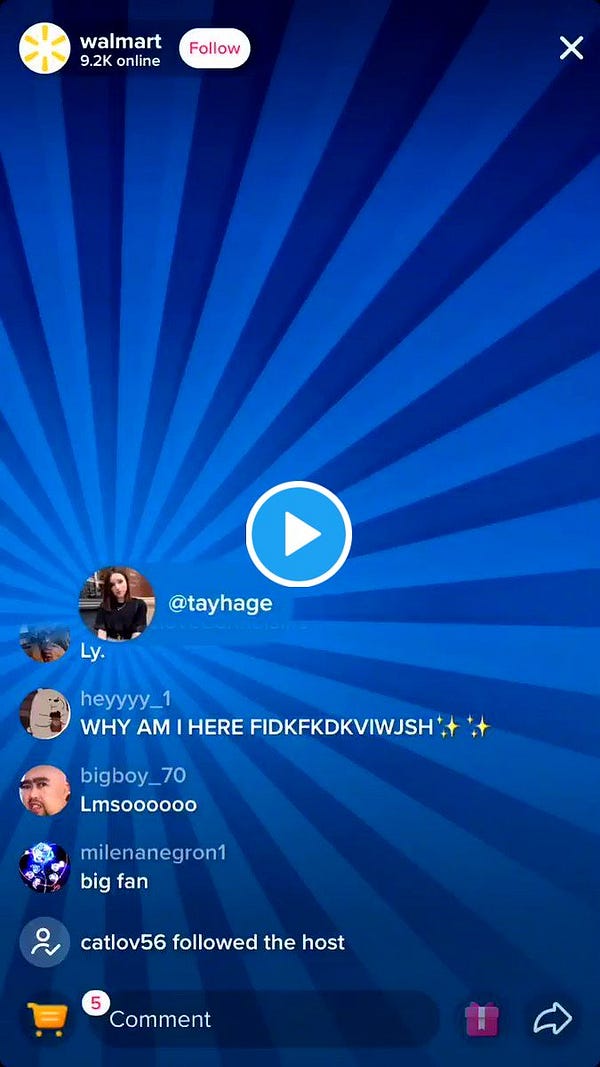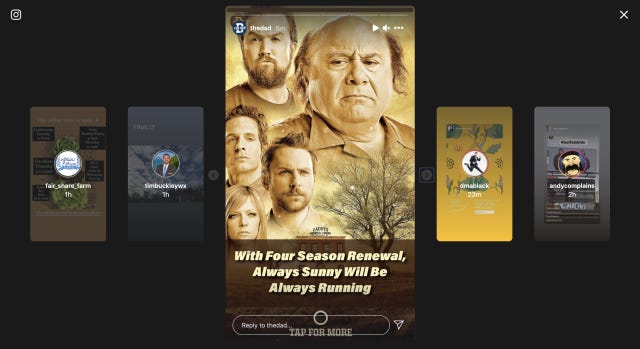Welp. That was an unintentional hiatus.
Quick recap: I broke my hand, which I was upfront about. But, I also lost my home. It wasn’t pandemic related, just a really bad set of circumstances that left me and my partner in a mad scramble to find a new place to rent at the worst possible time. Add in the complications of doing work one-handed, holidays, 2021 client planning, packing, moving… and it’s been a trying few months. But I’m ready to get back to it. You with me?
I’m jazzed to continue to grow this little newsletter into a better, more valuable, and entertaining resource for you, as it’s a point of pride for me to be able to create! Please, if you enjoy this newsletter, share it with a friend or colleague that could use it. Just hit the little share button below!
Thank you, thank you, thank you for sticking around through my absence. It’s tough to get back on the horse after the last few months, but I’m glad you’re here with me. Much love, Ryan.
The Big Stuff
Photo by Edi Libedinsky on Unsplash
For this issue, let’s ease back in with a brief look at what we might see in 2021 around a few areas: AR, Audio, Shopping, and Stories. If 2020 taught us anything, it’s that nothing is set in stone. And as always, let’s catch up on industry and platform news that affects the work we do in social media marketing and advertising. Let’s get to it.
Augmented Reality (AR)
Is AR really going to be a huge deal for social in 2021? In a sense, yes. Beyond some definite utility, AR has what 2021 will need: simple fun. However, the development costs and the technical skills required to create buzz-worthy AR experiences will still be prohibitive for a lot of brands on social. That said, Spark AR Studio is a do-it-yourself solution from Facebook for those that want to take the plunge, or you can always leverage the gallery of ready-made AR effects (a “special sauce” feature of Tik Tok’s that’s been widely swiped) offered by most platforms. Results not guaranteed.
Audio
Is Audio the next format frontier for social? From Twitter audio posts (dead?) to Twitter Spaces and Clubhouse, audio and audio chat-based formats gained steam last year, and may yet be poised to take off in 2021. I’ve talked about this before: audio content is easier than video to create, can leverage podcasts and other audio files, and can be consumed in a “screen-off” state you can’t do with video. Like all new things on social, moderation will continue to be an issue.
I wouldn’t wait on platforms to hand you new functionality - start thinking about how audio could become part of your content mix now.
Update: see below for a timely bit of Twitter audio-related news that backs up my notion that audio is still poised to be a growth area for the platform in 2021.
Shopping, shopping, shopping
Live shopping on Tik Tok, Facebook Shops rollout, and all things everywhere shopping on IG. If 2020 social embraced one thing, it was a direct sales pipeline for products on just about every platform. Love it or hate it, social has been looking for ways to diversify revenue beyond ad sales for years, and they’ve found it in processing fees from product sales. I think: shopping is here to stay, so a big differentiator will be which platforms will prioritize commerce over community going forward.
Side note: Walmart worked with Tik Tok to produce their first-ever live experience/shopping experience, and it was a pretty impressive feat. Fashion show or QVC experience? You decide. But get ready for a lot more of it. Tap the tweet below to see it in action.


Stories
Look, everything is stories now. The feature is tacked on to just about every social app you can think of:
Instagram: heck yes x2.
Snap: we literally invented this and y’all forgot.
Tik Tok: we didn’t forget ;)
Facebook: we’ll make you love it.
LinkedIn: not sure why, but ok!
Twitter: Fleets is also here too, folks!
I think stories are a format in search of a purpose on at least half these platforms. Reels are used to repost Tik Tok videos, Fleets are used to repost regular tweets, and I don’t know anyone using LinkedIn’s stories for anything (but it’s cute LinkedIn assumes its average user checks in daily).
This is leading to a glut of brands and creators reposting the same thing again and again across each platform in a shotgun approach that’s creating noise levels that are unacceptable. Like the general retreat from newsfeeds we’ve seen on many platforms, users are going to choose which platform they want to see the content “first and only” on. My prediction: it won’t be LinkedIn or Twitter stories.
That said, there’s a lot invested in this format and it’ll be one to watch this year, not for which one has the most filters, but which platform enables the format to do more for community and connectedness, rather than passive content consumption.
Bonus category: Is it time to consider Curators over Influencers? It’s a persuasive argument (from the always persuasive Ana Andjelic) that flips the influencer formula on its head. The objective being to assemble a collection that tells a story, not the “my experience” story that typically marks influencer content. Many choose to remain anonymous (what?) and focus on niche communities rather than sheer volume. It’s the story that raises the product’s cache, it’s cultural value, and therefore it’s price. As Ana explains:
For a brand, curation can retain an audience and attract the new one that hasn’t considered a brand before. It can attract a collaborator or start a brand partnership. It can increase product value and protect pricing. For an individual, curation can be a way to get into a creative profession or monetize their taste.
The Small Stuff
Recommended Reading: Victoria Tran, Community Director at Inner Sloth, dives into her straightforward, thoughtful, and very effective social/community strategy for the blockbuster game of 2020: Among Us.
Facebook is finally following up on its pledge to kill likes for Pages in favor of the much simpler “Followers” metric. The difference has always been needlessly complex. Here’s what you need to know.
Instagram is quietly testing a Stories browsing layout for desktop. One step closer to FBs goal of moving the main platform feeds to a vertical layout.
If I’m reading this right, Hootsuite is about to add some major messaging functionality to the platform. With the purchase of Sparkcentral, Hootsuite should eventually be able to centralize your incoming messaging from “WhatsApp, WeChat, Google Business Messages, Apple Business Chat, Telegram, and SMS”.
LinkedIn is adding more page management roles (Super Admin, Content, Curator, Analyst) and three new “paid admin” roles (Sponsored Content Poster, Lead Gen Forms Manager, Pipeline Builder) to help break out governance. Details here.
Twitter has announced it’s buying four-year-old podcast platform Breaker. There are concrete details, but adding the “screen off” ability to upload and consume podcasts directly from the app would be a big addition.
Tip Tok for content creators: there isn’t a right time of day to post on the platform. Often and consistent is what the algo looks for.


Instagram’s new keyword search can allow you to find untagged mentions and do some SEO to help surface with potential customers. Dhariana Lozano explains in her blog.
Twitter is testing branded sharing to IG stories, on top of sharing to Snap. The embedded tweet thread was too long, so check it out here.
You made it to the bottom!
Bonus #1. Here’s an amazing repository of 2021 Trend decks all for free (no annoying email sign-ups!).


Bonus #2: Kapwing’s Robert Martin has a great tutorial on how to create a cheap and easy AR filter for IG via Spark. H/T Social Media Today. These filters have reinforced a universal content truth for me: a fun experience can trump a polished experience almost every time.
Ryan LaFlamme has worked in social media marketing and advertising for longer than the job had a title. He formed the independent social consultancy Hub and Spoke in 2016, and can be found hanging out on Twitter @ryanlaf Now accepting new clients and speaking engagements.








